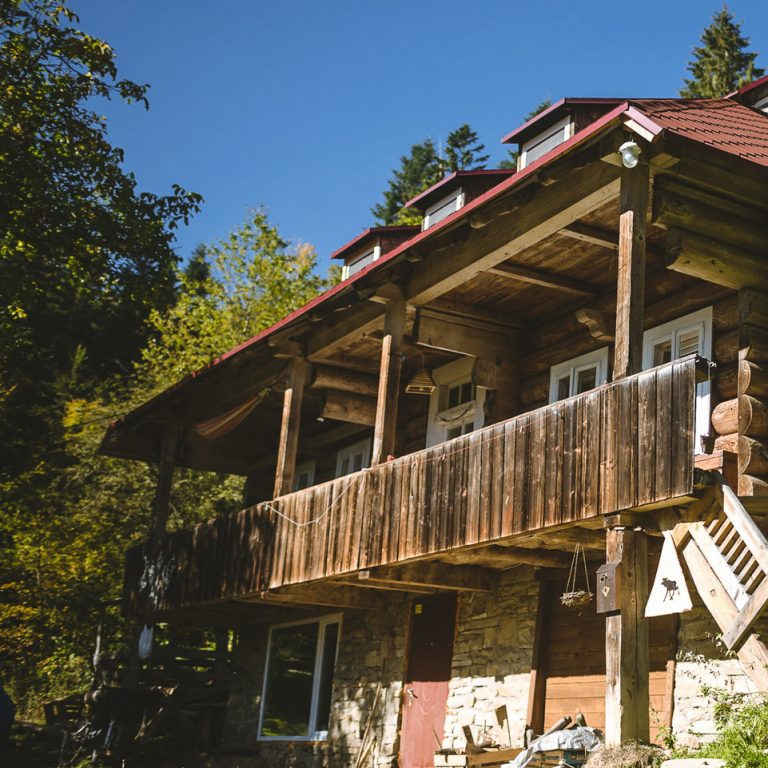When there is an abundance of ideas worth realizing, people ready for work, and enough resources to cover the needs, then the perfect place will always be found – or created.
The Residence Khata-Maysternya (ukr.: House-Workshop – tr.) is a space for integrated learning; an area for training, seminars, camps and retreats. Here, amid the mountains, everyone can be themselves, comfortable, and cozy.
Back in early 2014, enthusiasts from all over Ukraine only dreamed of having their own common area in the mountains. Today, they found the perfect spot in the Carpathian village of Babyn, surrounded by a beautiful view. The old Hutsul house (Hutsuls – an ethnocultural group of Ukrainian highlanders, tr.) from the 1930s, has five rooms that serve as hostel, classrooms, and bathrooms, and give guests the chance to try authentic dishes made by locals.
But what is really at work in Khata-Maysternya, is a special mixture of particular human skills and abilities; today, the residence serves as a space for training and courses in areas from vocal to managerial. The name itself comes from the primary use of the building: a home for coaches, alumni, and the many others involved in the “workshops for community activity”. Currently, the majority of Khata-Maysternya’s team is made up of the members of the group “Alternative Learning”, which is involved in informal education in Ukraine.

The History of Khata-Maysternya
The creators of Khata-Maysternya don’t see it simply as a restored project, or a place purely for gaining new experiences. Murmurs spread, even among the guests, of Khata-Maysternya’s “soul”. This isn’t surprising, however, as the land is surrounded by lush forests, protected by steep Carpathian slopes, and enveloped in a rich history.
We need only mention the name of Khata-Maysternya’s builder, Vasyl Paliychuk, who was a master with wood, creating and decorating trunks and beams. He came from a poor family but broke through all barriers thanks to his amazing talent. Already well-liked in the village, Paliychuk became known through all of Poland (as a significant part of the Carpathians belonged to Poland at the time), when in the 1930s, he built an observatory on the Pip Ivan Peak (2022 m above sea level) (Chornohora (bukr. “Black Mountain” – the highest mountain range in the Eastern Beskids and the Ukrainian Carpathians in Western Ukraine, tr.)

In 1935, he built the house as a family home. As the war began, it was converted into a hospital, and once it ended, used as a refuge for insurgents. This was all possible thanks to the very convenient location of the house, carefully and deliberately chosen by Vasyl. The house stands in a gorge between wooded hills, practically impossible to see through the wall of leafy trees during the warmer parts of the year.
This little oasis saw en plein airs – master-classes from traditional folk artists, for students of Kosiv.
The Paliychuk family became known in many societies, from nearby masters to local officials of different ranks. And in the village of Babyn, people still remember that it was there – in Kynychky – that the first phone of the region appeared.
It was in this house that Vasyl and his wife raised their children and watched the growth of their family – which occupied the house until 2008, when an August flood shifted the house that seemed to almost be supporting the mountainside.
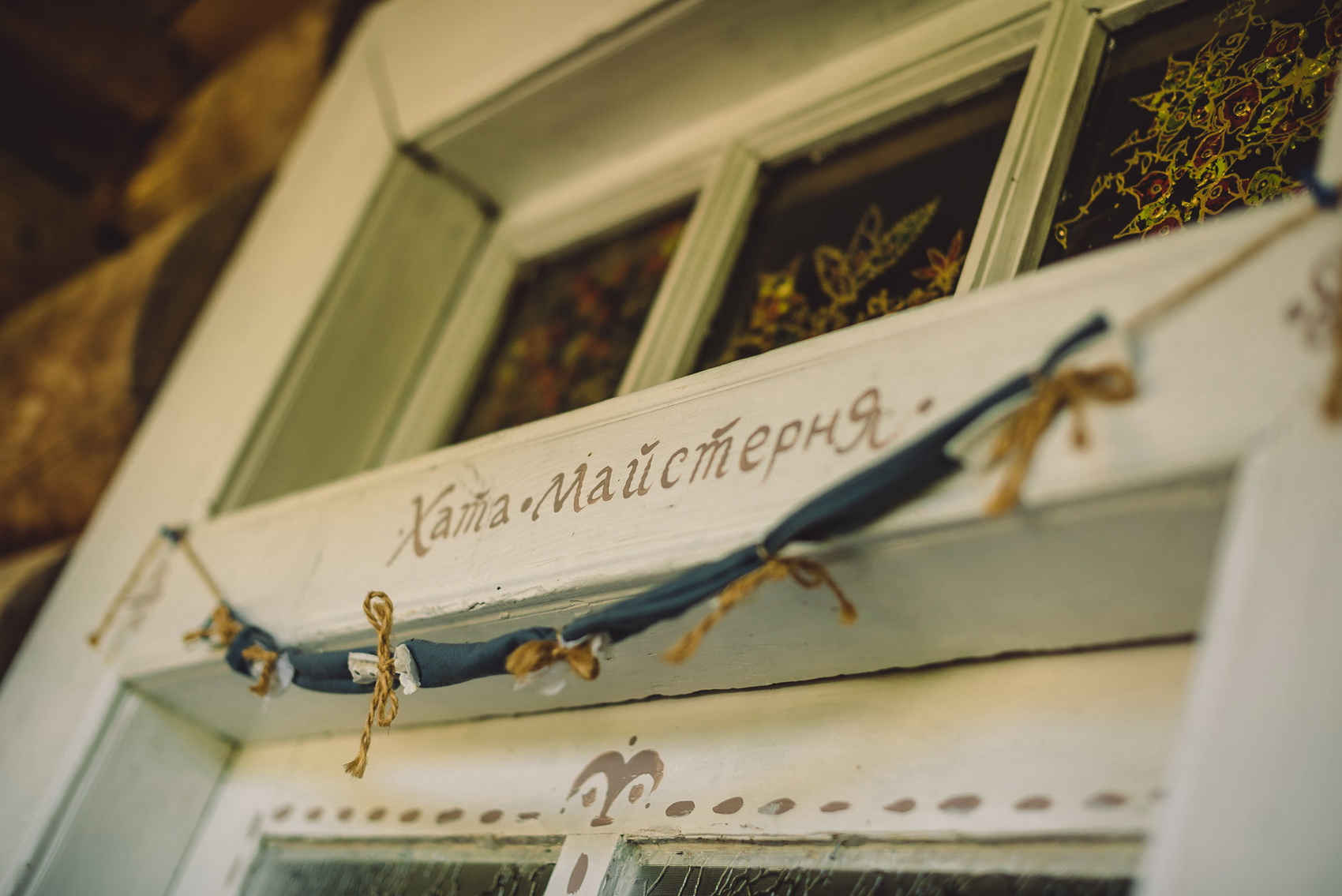
The family continued living in the house after the flood, its ownership and care having been given to Olesia Bychyniuk – Paliychuk’s great-granddaughter. Her first husband, Bogdan Petrychuk, was the one who introduced Khata-Maysternya’s team to the area.
Mutual Understanding with Locals
The house is located at a height of about 650 m above sea level, on the rise near the Sokilsky range (ukr. Falcon’s tange – a part of the Ukrainian Carpathians next to Kosiv, Ivano-Frankivsk region, tr.).
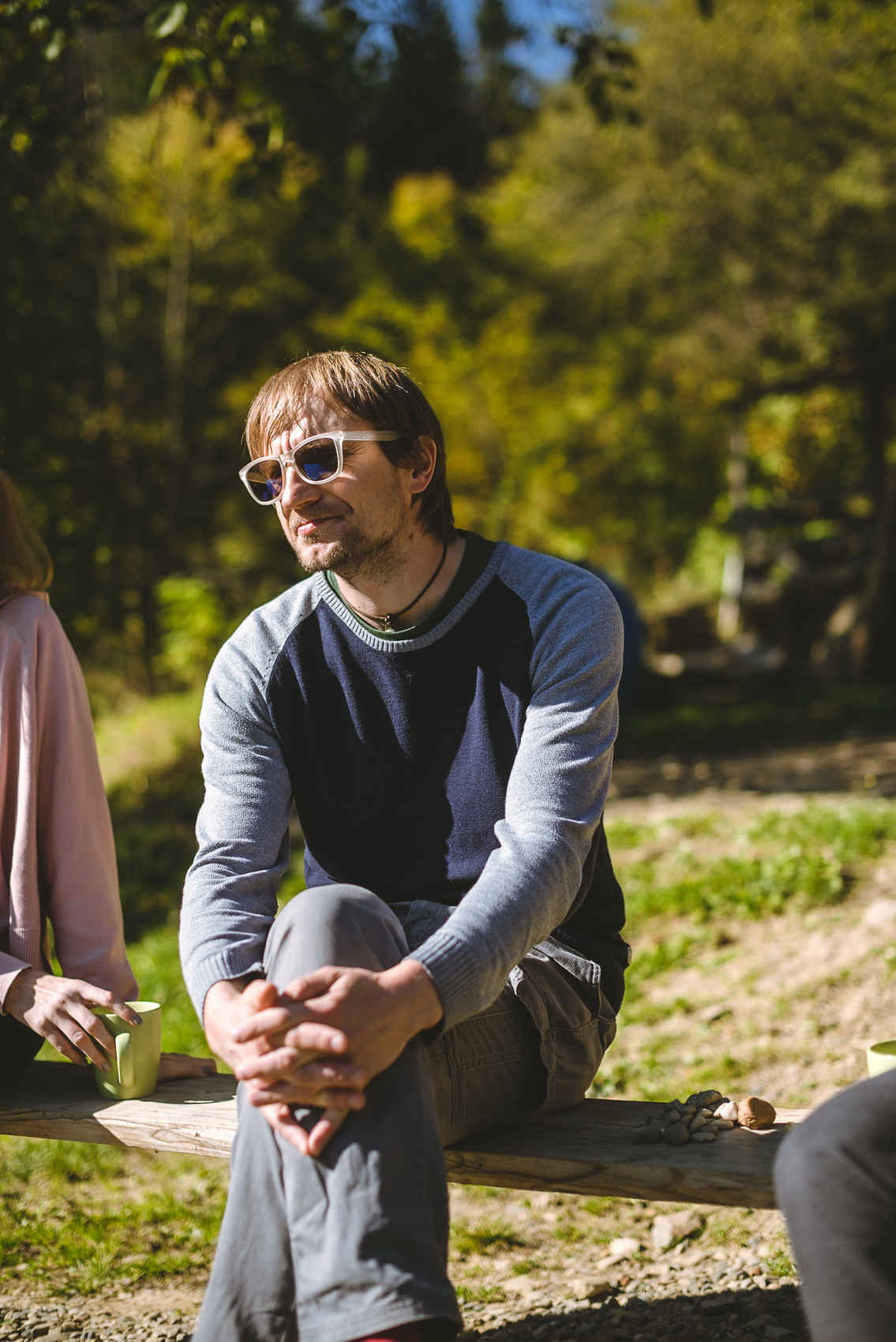
Here, the team found a place that they were able to rent under partnership terms. Although this was a hard choice, since they wanted a place they could own and have for themselves, it was only rational to accept help from the locals, to create connections through the rent, as Vitaliy (Vilya) Chupak explains.
— The point was having partners on the spot,” he said. “You can’t finish a project on your own, and it definitely won’t create itself. There have to be friends, partners, relatives, who are interested and present locally. There is brand new cooperation with the Hutsuls, established exactly how it was envisioned.
The territory of Khata-Maysternya, has its own unique pace of life. Those used to rushing everywhere are forced to slow down their tempo.
Alyona Karavai, one of the team members, realized a long time ago that she can spend the whole day there working – and if she takes on many things at once, they have to be small goals:
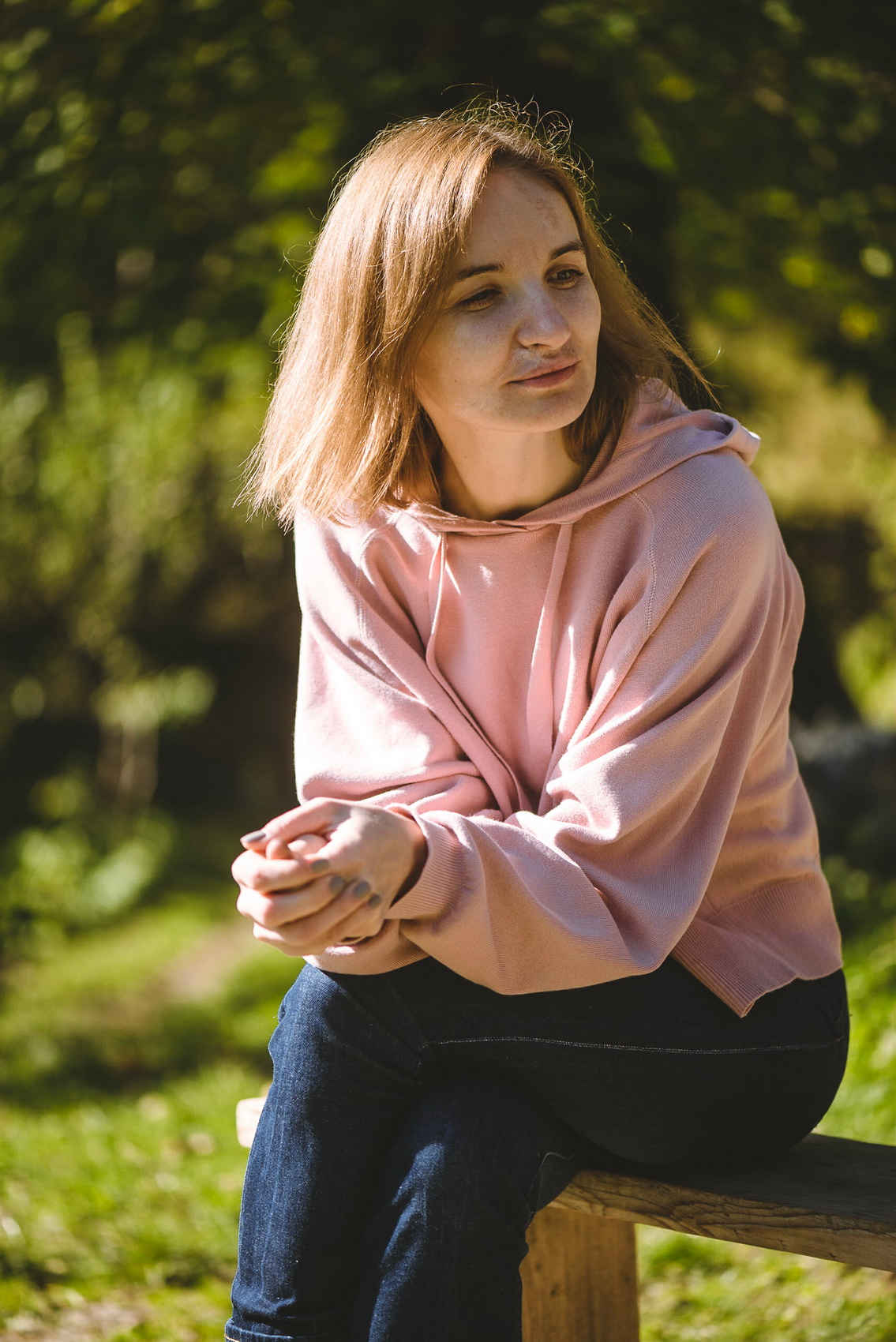
— Your whole day can be spent buying bread and milk and preparing food for the guests. And that’s it; the entire day is gone. Multitasking doesn’t really exist here. You choose a goal and see it through until the end. Sometimes, when you get to the city and have to start running again to keep up, you start to miss the pace of this place.
Like the rest of the team, Alyona got the chance to stay at Khata-Maysternya. As she said:
— Here, it’s calm; here, it’s comfortable. I have a sense of absolute safety. If anyone can pass through, it’s someone from the village – and they mean you no harm. As the locals tell us, this is a corner village; it’s where the road ends – no one will come here to steal. Everyone here trusts each other: I can leave out gold, and I know nobody will touch it.
Locals
The locals are rather ambiguous towards the building, though they happily show visitors the way to “Paliychuk’s house”. But it’s important to be prepared for the path to the place itself: there’s no driveway up to the house, although there is a road on which you can take a UAZ to transport your things – but such a commodity is not available year-round, as the bog can’t dry fast enough through the thick woods during the wetter seasons. For this reason, the administration of Khata-Maysternya recommends the singing route through the mountain paths, for which special markers have been established through two villages.
The road from the centre of Babyn is over 900 m long, with an overall elevation change of 300 m; it was this way that most of the fragile material (such as windows or bathroom appliances) was carried by volunteers. But there is an alternate route that starts in the village Sokolivka, at the Kosiv-Verkhovyna motorway, that extends for just over two kilometers – a nice, gradual slope over the course of which you can enjoy the incredible view.

At first, locals were uncomfortable, but they quickly developed a great interest towards the goings-on of the house. In general, people perceive and understand their surroundings differently; you need to start a conversation to get everyone on the same page. As Taras Kovalchuk explained, life in the villages surrounding the mountains has its own set of rules.
— You must always close the fence behind you, but a passing group of twenty people won’t think to do that. And that’s when you start to have problems. If the fence is left open, the cow will wander off into the next town, eat something it’s not supposed to. Or you saw that the plum (tree) fell, so you went and chopped it up for firewood – but it wasn’t yours to chop.
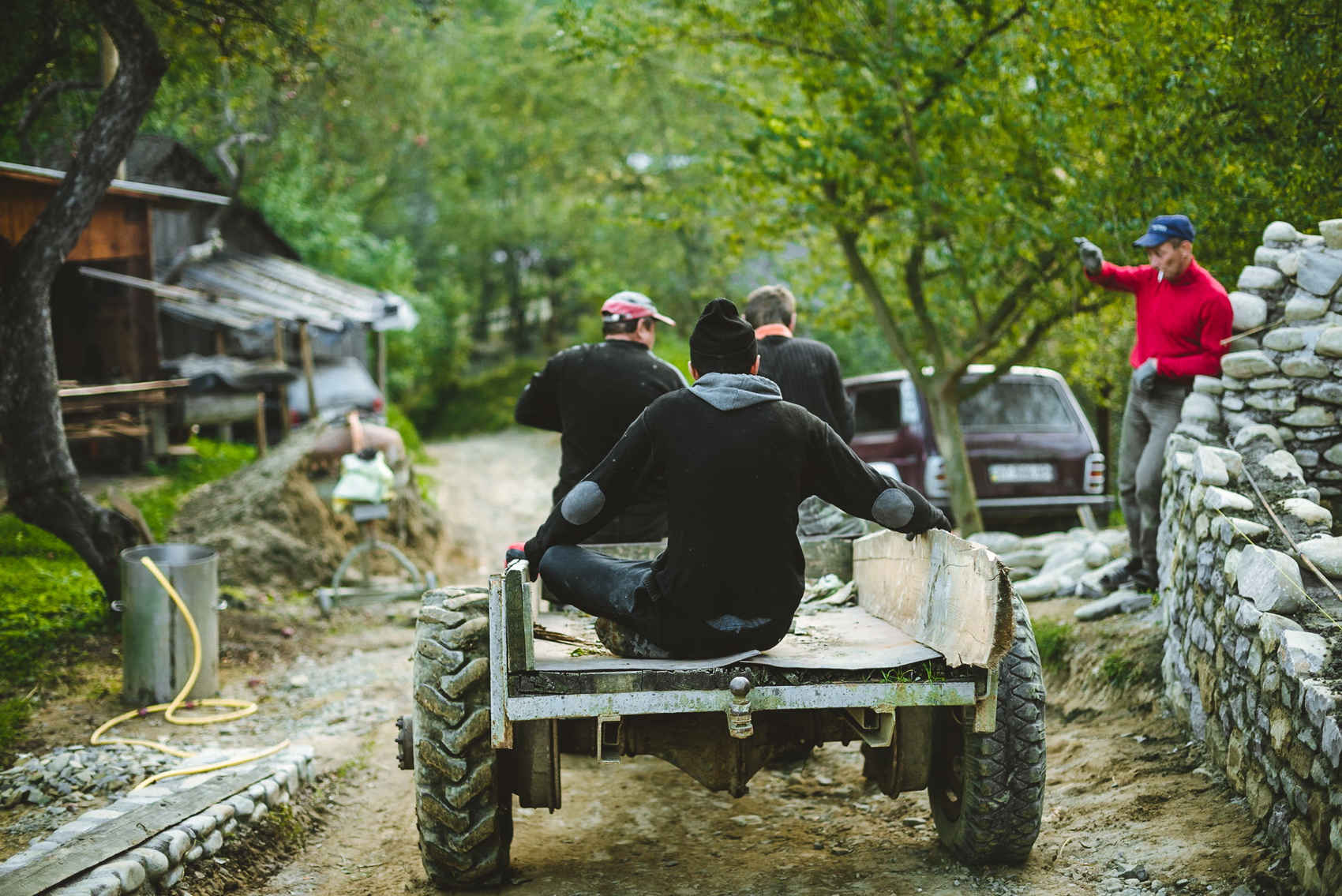
The see the difference between what is yours and what isn’t, is very clear in the village. One local pair, Olga and Vasyl Bychynyuk, have become a sort of nucleus connecting the team with the region. Having lived there for many years, the couple know how and when to act: where to find a horse to bring things up the mountain in the wintertime, or who to talk to if the power line got cut. The Bychynyuks were invaluable in making vital connections with the locals, and became the team’s primary source of information – although this has shown some downsides, as a certain single-sided point of view tends to domineer.
Throughout the village, there are many impressive artisans who hand-craft authentic things. For example, Maria, who lives nearby and who weaves Kapchurs (wool socks), hats, mittens, and many other interesting pieces, from sheep wool. Alyona Karavai told us about her work with the artist:
— This is the kind of situation where the village mentality plays an important role. The (Bynychuk) family that works here isn’t happy to see (Maria). The home collects resources and brings them back to the village, but there are always people who see this and want to take everything for themselves. This makes us worry. We try to talk to the people, tell them that they can’t do this – that what we’re giving back is for everyone to share – but this is hard to change because people don’t react well to such intervention. Someone told someone else that they can’t come around here, and this hangs around the studio. But we’re looking for some kind of alternative. Now, since Maria stopped coming to us, we come to her.
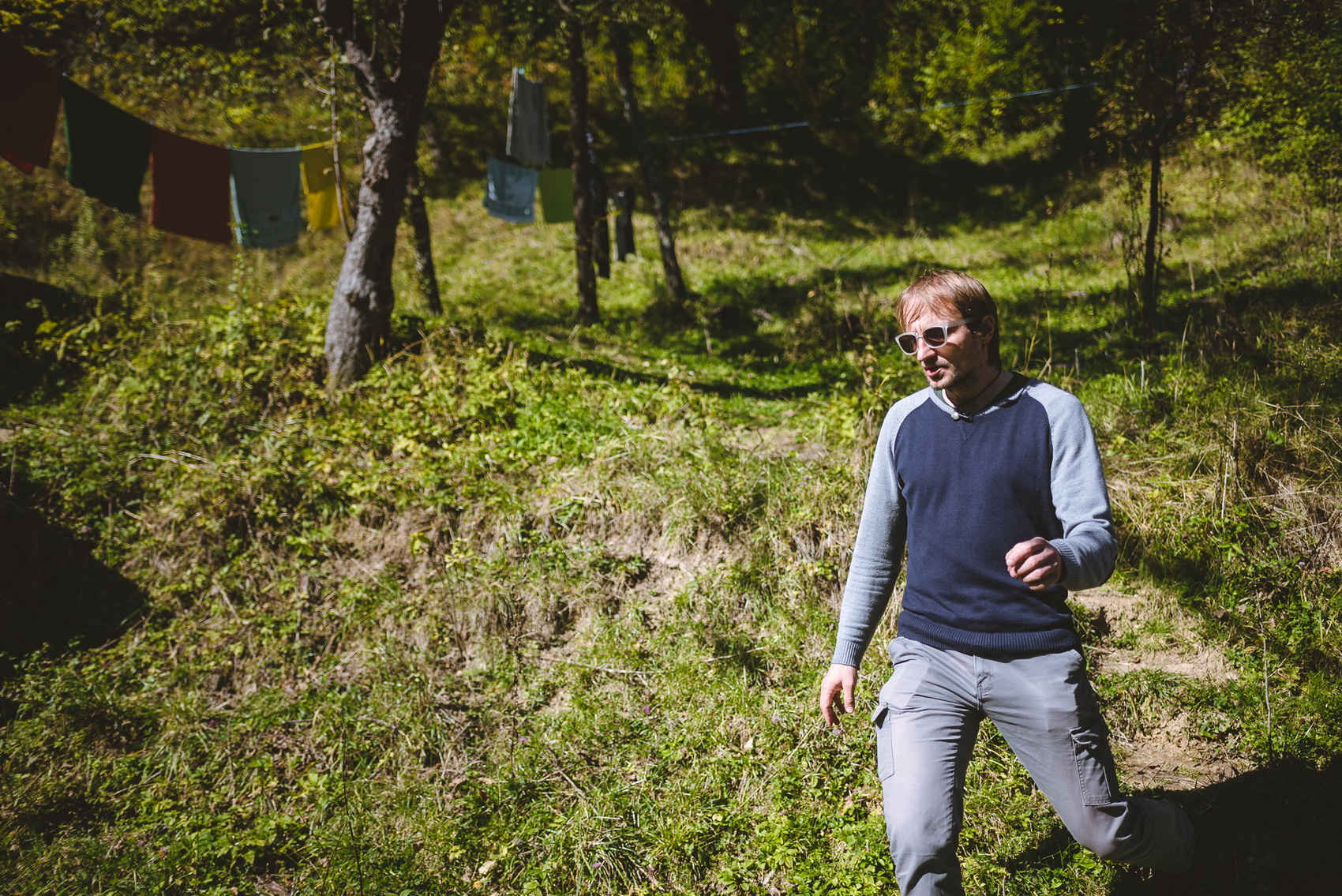
Vilya Chupak also comes back to the idea of having a mutual understanding with the locals:
— At first there was this feeling that they thought this was some kind of scam. We had to have an agreement signed to start work. The relationship was awkward; we didn’t fully understand what was going on, how people perceived things. It’s easier now because we can see what’s already been done. But I’m still not sure how much they understand of what’s being done here.
There are occasions when the team itself attracts locals to work with it. In particular, a kid’s camp that runs during some move-in periods, encourages the children to help care for local farm animals. This program was implemented by Khata-Maysternya’s team, meant to foster a relationship between the kids and animals. And, as Alyona Karavai says, the village isn’t at all opposed to this cooperation.
— We fill the club’s schedule with activity,” she says. “We offer the club as an open space for groups, and it’s able to run because the groups really like our events. At the school, we organize presentations – basic gifts for the day of Saint Mykolai. Some people attend the village council meetings sometimes, especially Taras and Sasha, who are keen advocates of ecology, and are involved in the garbage sector. Here, garbage is dumped into the rivers, so the pair is trying to figure out how they can fix this; how to transport it, what is actually needed, how to install a container for collection, etc. So those are the three directions: the club, school, and the village council.
Although the team can’t say they have seen any substantial changes in the area brought on by the presence of the residence, everyone agrees that the process and work continues. For example, the team has already started working with the school: the teenage students are watching documentaries and getting to meet the directors. The organizers of the project are giving the village everything they can, but the results have yet to be seen.
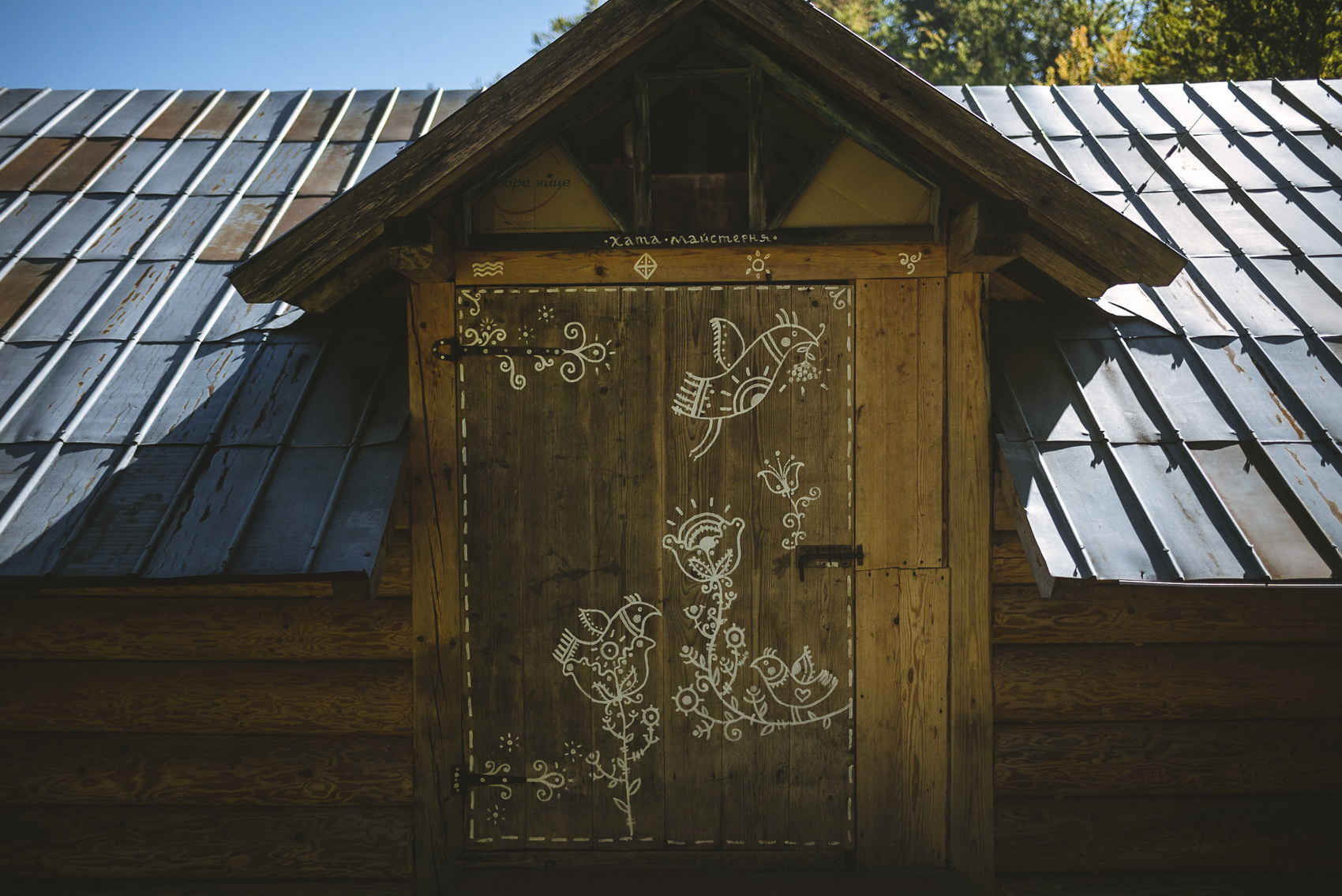
The residence has become a sort of networking platform in the area. People who come here from cities for training and retreats can often see various different realities by getting to know locals who create something of their own – socks, liqueurs, cheeses – and seeing their work first-hand.
— A real human relationship, — Alyona told us, — can only be developed if you come here for two to three months. It’s not surprising that the team is closest to the family that owns the House. This is why we have a contract with them not only to rent this place but for the supply of food for visitors as well. Olga oversees the home products, some of which she brings in from her own garden. Vasyl ensures that all the guests are happy and have a good time. The kitchen in the house is very modern and comfortable.”
But it hasn’t always been like this. Alyona remembers the time when the kitchen wasn’t at all how it is now:
— In the morning you would come and find the plates stuck together from the cold, so frozen that you can’t separate them. Now everything is really fancy; back then, we couldn’t even have imagined that it would be this great.
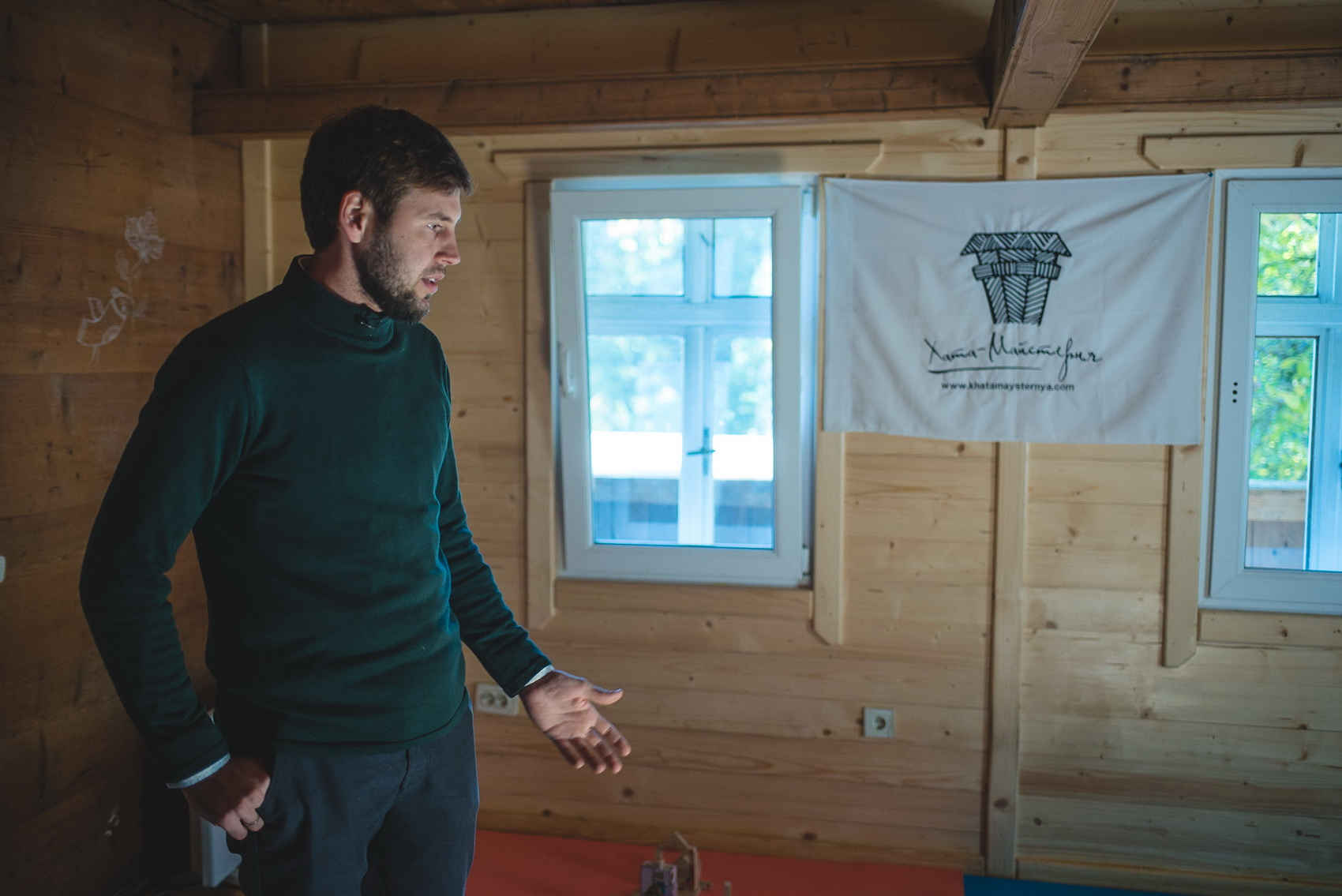
Renovation
In 2014, the team got a shifted seventy-year-old house with a leaky roof, patches of which were completely missing, and next to no communication. The attic resembled an abandoned warehouse museum, like you might see in old village houses.
Vilya Chupak was the first to take on the renovation project.
— It was a mess. The attic was completely filled, everything was leaking. The previous owners left after a flood, and the house just stood there, forgotten. We didn’t pick this up out of nowhere either: we had been coming for about half a year to see the place, look at the water drainage system, check if it would shift. It was a rainy summer, too – lot’s of water, everything’s bubbling, the water is flowing, the house is standing… We figured it has survived this long, it’ll survive longer.
A month was spent just putting together basic things for comfortable living. There is a foundation where before there were just a few bricks supporting the entire house. The team remembers like horror how the house seemed to hang in the air during the construction of the foundation.
Taras Kovalchuk said that the house accepted the new owners in its own way.
— It has its own personality, like a living organism. It’s not really far from the road or civilization – about seven kilometers – but here you can feel just how much nature affects a person’s life, and what kind of life people led one to two hundred years ago. Really, aside from the fact that there is electricity and internet here, you don’t really see anything here. You’re so close to nature: to the place where the cow grazes, where the birds sing, where the tree fell. Today the sun is shining, tomorrow there will be knee-high snow, this is how it was. It takes some adjusting, but it’s something you won’t see in the city.
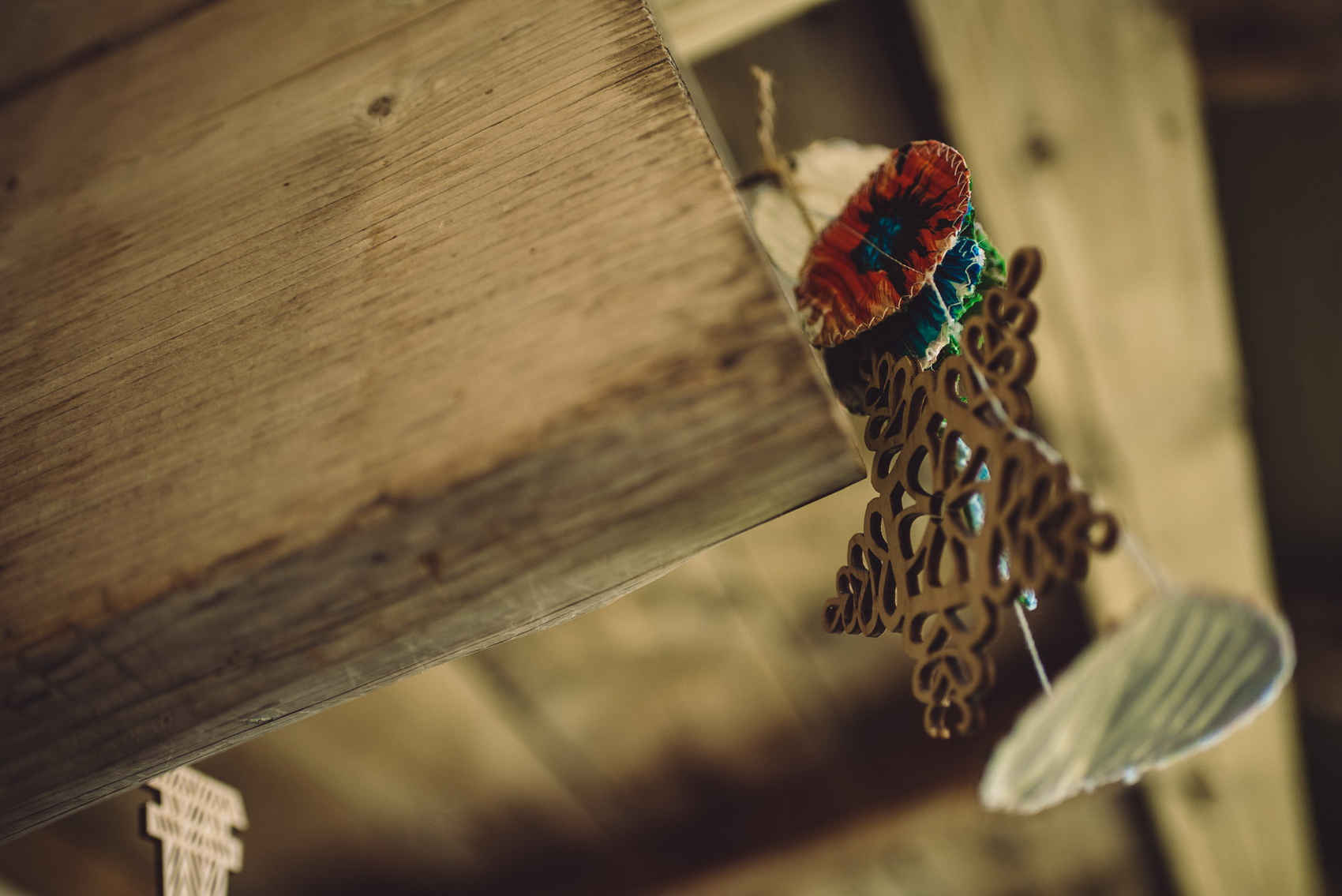
The romance of the mountains affected reconstruction deeply. You needed to deliver the resources; you needed to take care of them. Having planned everything in the city, it was really hard at first to foresee many of the issues that came up, as Vilya Chupak tells us.
— All processes end up getting delayed, which is why it’s smarter to really wait than to rush. It’s a lot harder here than somewhere in the city. There, they deliver it on time, the link is there, the group, the delivery, you can pile up the material; here, they something is wrong with the delivery, or they didn’t protect the material and it was ruined (boards, cement) … The risks were higher because we didn’t know how the net would behave. It’s like there were three separate phases: we put it through the sawmill and the light went out. I remember we were looking for a fridge that would work here, and we found it. We were even joking that all the local refrigerators break – but not ours. Why? Because ours is a Belarusian one.
A humorous approach, responsibility and understanding, have, over a couple years, transformed a leaky attic with a mound into a five-room hostel; an old hayloft into a spacious summer conference room that can hold up to thirty people; and an impenetrable ground flood into a kitchen with all the modern upgrades.
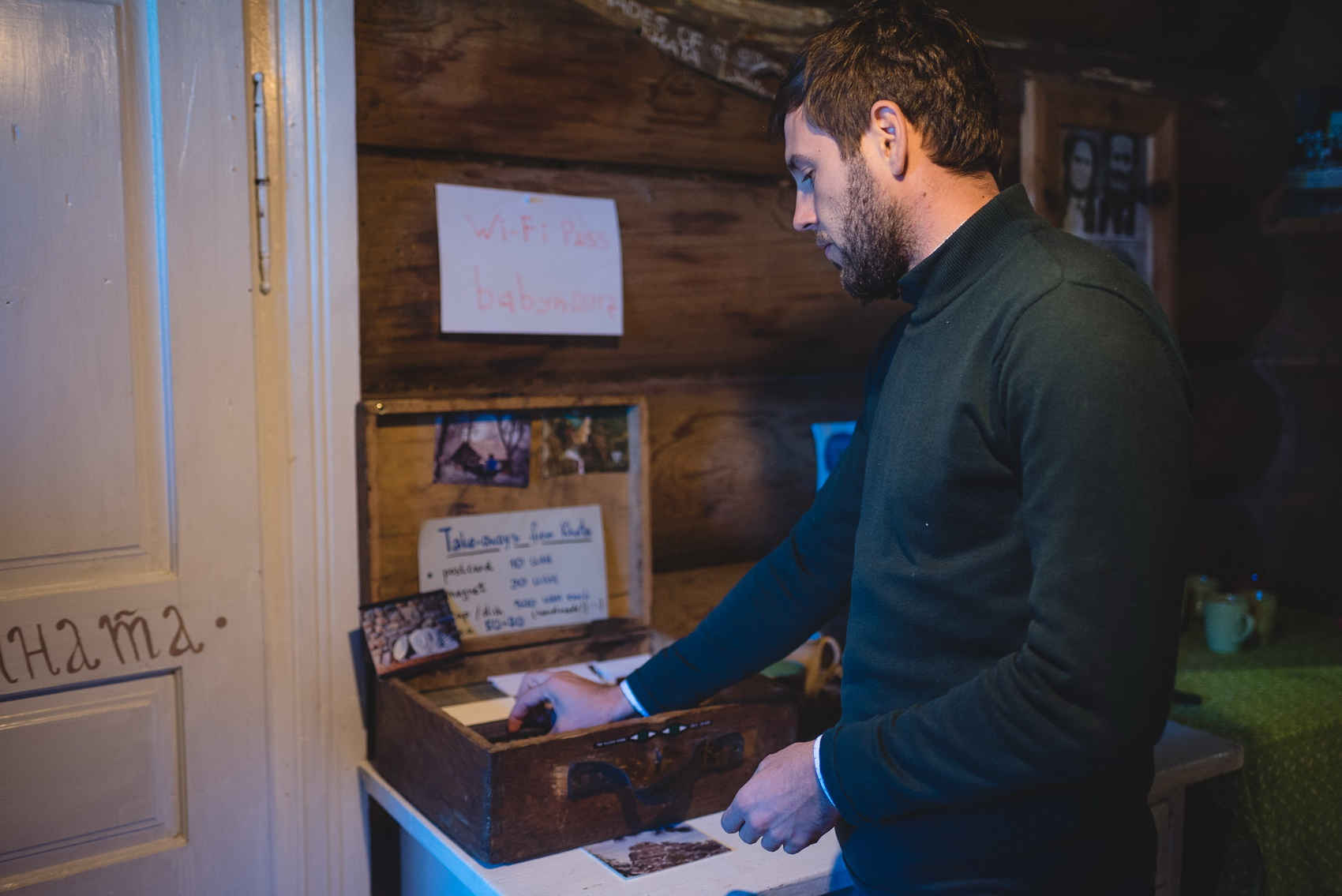
Resources
In 2014, some members of the team were working with an organization called MitOst. They announced through their network in Ukraine and elsewhere, that there is an idea proposed for a seminar building. There were people ready to take it on, and anyone showing interest was allowed to join the project.
The initial budget proposed had to be doubled several times. At first, because of the cost of delivery to the location: there was a temporary delay and it was necessary to make very detailed lists of what was essential. Some funds were collected from friends and team members, and this again multiplied the project’s cost.
At first, there were seventeen people contributing financially. Individual investments ranged from fifty to five thousand euros, depending on how much everyone could contribute at the time. In total, there were about twenty thousand euros. Later, during the implementation of the plans, an additional thirty thousand was received.
Initially, everyone who invested in the house in any way was made part of the team, but it was later realized that not everyone wanted this – some just wanted to donate – and the decision to join the pool was made by the persons themselves. The members who did join team played an important role, donating their time or skills, without which the project definitely wouldn’t have been finished.
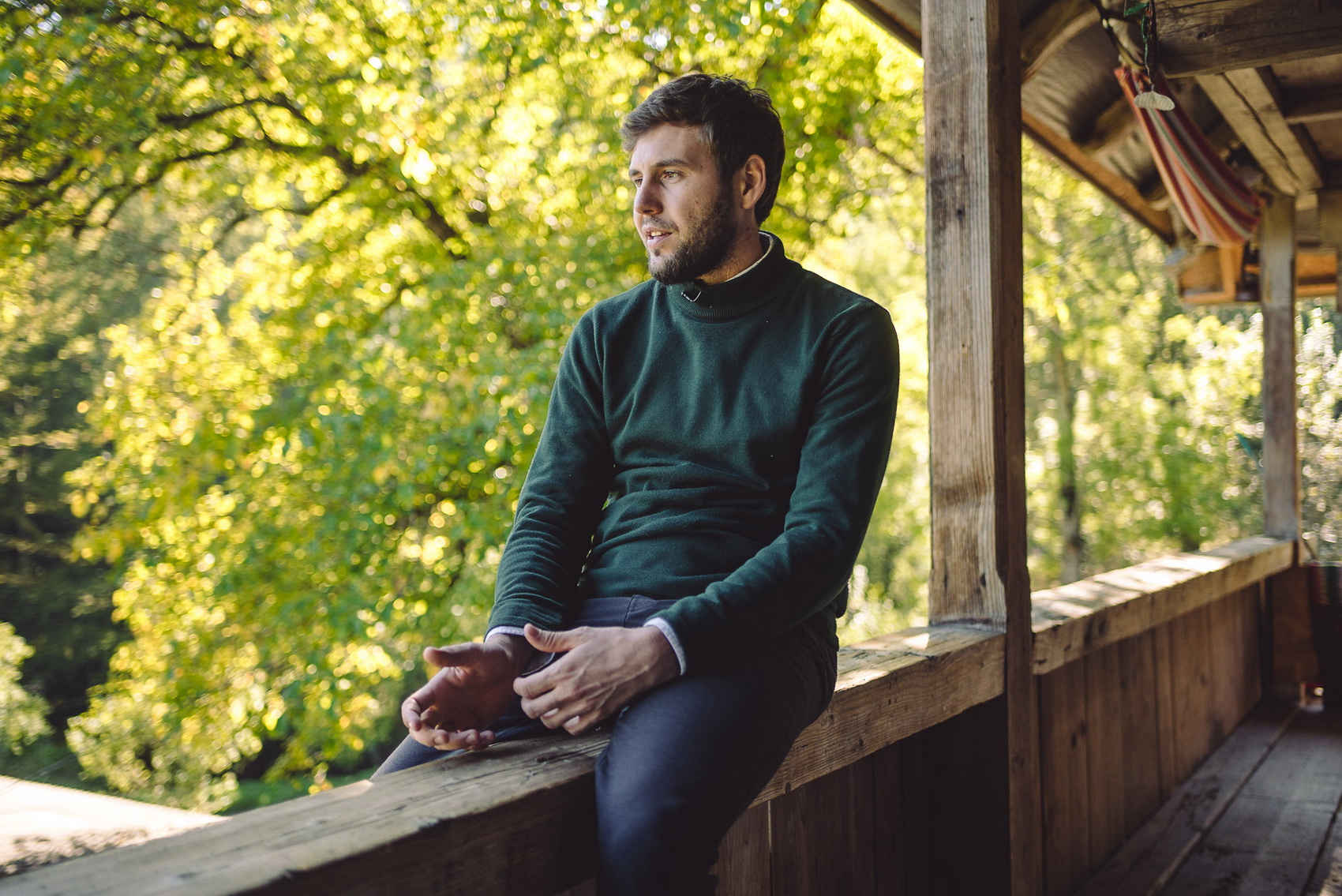
Taras Kovalchuk, a volunteer, comments on the pricelessness of human contribution:
— Aside from money, it’s very important to have the resource that is human ability. We had a lot of support here, starting with the crowdfunding and ending with contributions from those who became interested in the endeavor. They came, dug up, gathered clay, rocks, build the road, made the floor from concrete, painted, varnished.
It’s hard to measure precisely how much each person gave throughout the course of the project, since new contributions that came in were re-invested and, when needed, things were added on the go, Alyona Karavai stressed.
— Really, it wasn’t a matter of money, but a matter of the living human integrity that was devoted. What unites us is the fact that there remain people who are still willing to work. Not only those who develop ideas, but also those who can and will nurture relationships and team dynamic – because this becomes just as hard sometimes and there are often disagreements. You need to have a team you can argue with. We do it because we all want the best for this house, and sometimes we might have different visions. It’s like a roller coaster: up and down. Everything has its own hardships.

People
Over the course of the creation of the residence Khata-Maysternya, a common goal united many different kinds of people, all of who had their own unique needs. For example, Olga Dyatel arrived in 2014, right after the ‘referendum’ in her hometown, Crimea. Sasha Moskovchuk and Taras Grytsiuk had an internal need for meaningful physical work; they dug up a hole for compost, set up the water system, and cleaned out the socle. This way, the core team was created: Bogdan Velgan, Taras Grytsiuk, Olga Dyatel, Ekaterina and Olga Zarko, Alyona Karavai, Yulia Kniupa, Taras Kovalchuk, Magda Lapshyn, Anna Mygal, Sasha Moskovchuk, Svyat Popov, Tanya Sklyar, Natalia Trambovetska, Vilya and Ivanka Chupak..
From the first day of the project, the basis of the Khata-Maysternya’s team was formed by people from all over Ukraine and surrounding regions. This was the geography of the team members in 2014.
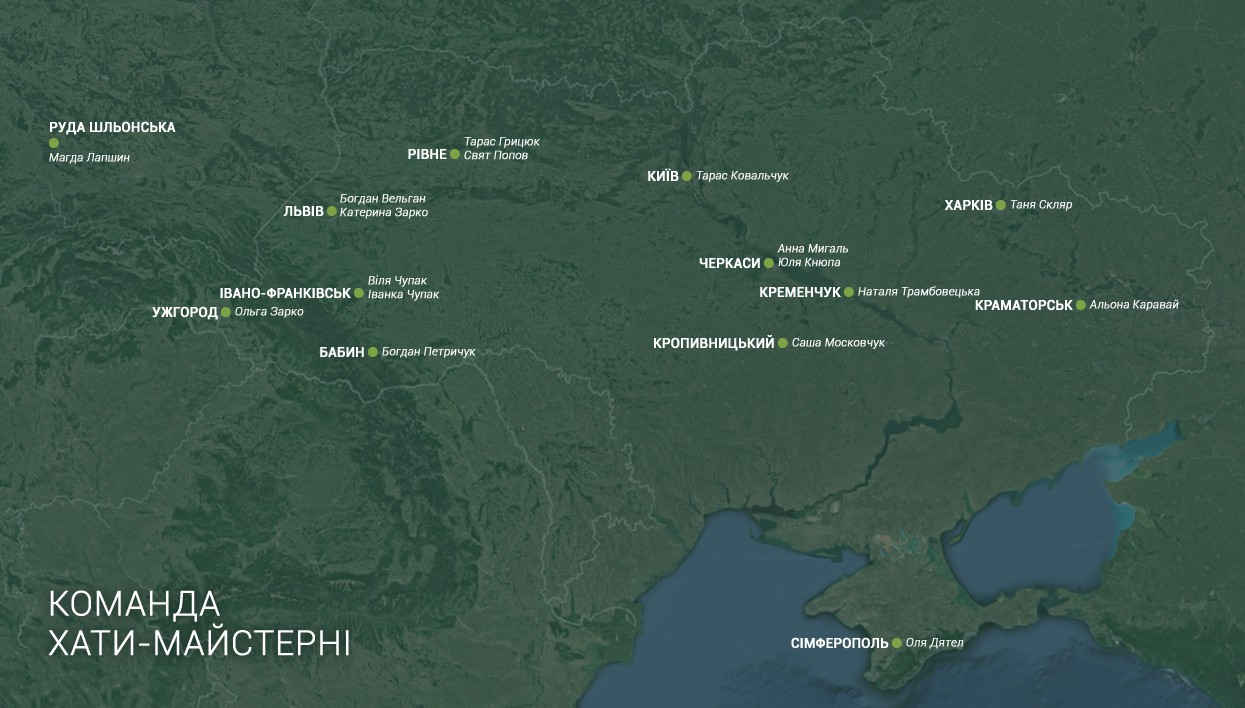
From the first day of the project, the basis of the Khata-Maysternya’s team was formed by people from all over Ukraine and surrounding regions. This was the geography of the team members in 2014.
One of the biggest imprints on the project was left by Bogdan Petrychuk: he introduced and brought the team to this location, established the first communication channels, and developed the project from its very beginning. Another group worth mentioning are the volunteers, who came from almost all corners of the world. The uniting goal became a common source for their emotions and friendship: some people were distanced from the endeavor at different stages, but new ones always joined. Taras Kovalchuk said:
— It’s a question of what is friendship. It is a kind of mutual, selfless aid, support, love. First we create these tasks, and then we figure them out ourselves. What unites us is that we all want to do something, to create, fearlessly. We have made a place where people can gather, divide into groups based on interest, and move on to do something else. For me, this is a big achievement.
Taras Kovalchuk
— For me, it’s really a place where I can rest. Life is such a dynamic, crazy thing, and all of the team members are very busy people, but there is a time, once a year, when we can all come together. This is a place where I can go and know that I’m not rushing to get anywhere; here, time stands still. Something else that’s really cool is the social environment – when you arrive and the grandma on the hill remembers your name and what you do.
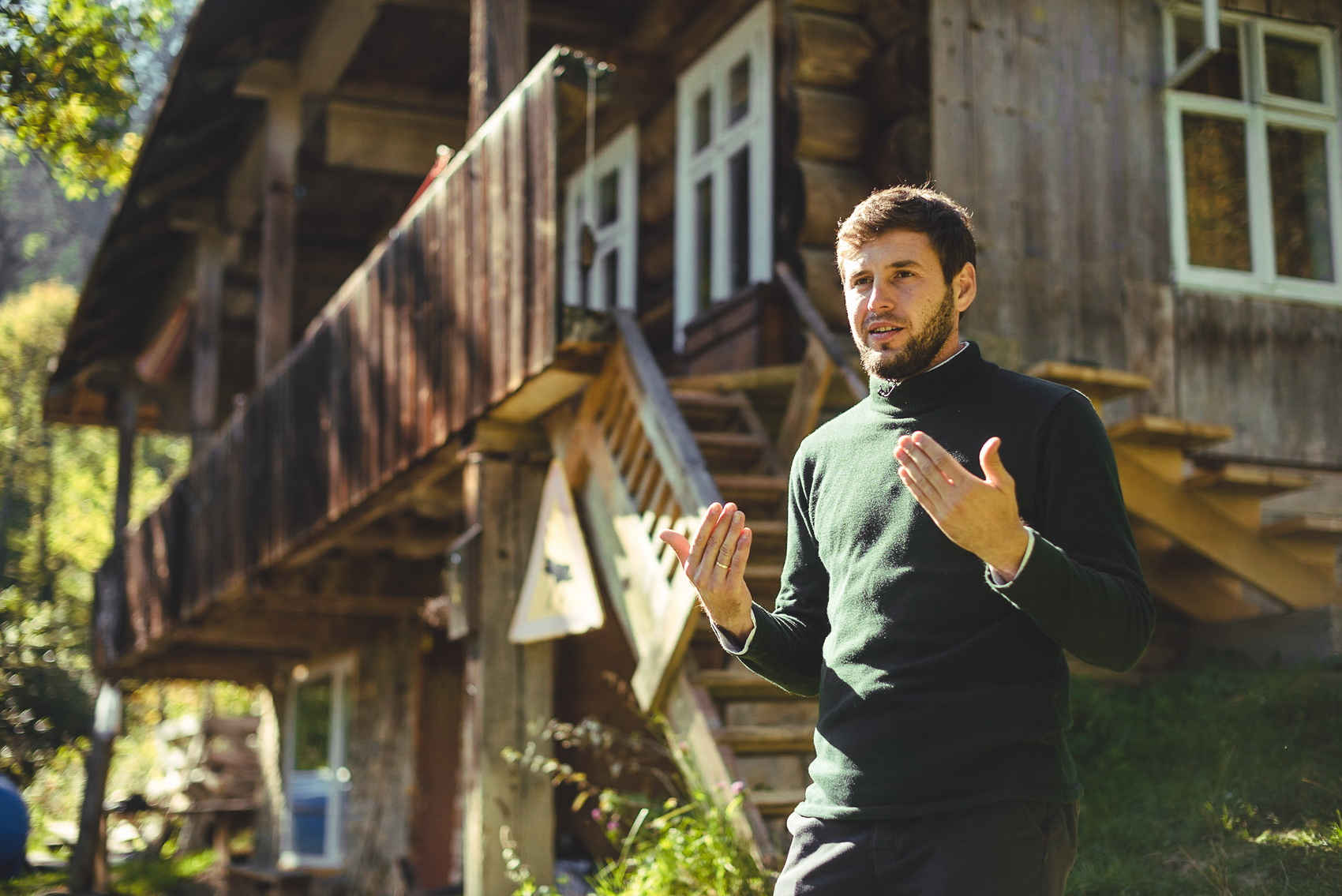
— It’s like you came to your grandma’s house. Everything is three times tastier, the sun is three time brighter. Everything is so real.
A certain kind of craziness ties the team together. It’s hard to call the project commercial, no one really expects it to make a profit. It’s more rewarding to see the joy it brings, hear good reviews from the guests, and to collaborate with other projects.
Alyona Karavai
— This is another home to me. It’s that feeling when you look at photos and can smell the place. It’s another home for everyone. For me, it was a place to which I could invite people, knowing that they would be comfortable here, that they would be warm. It doesn’t have to be luxurious.

Vilya Chupak sees strength in the impressive numbers of the team:
— In a team this size, it makes sense, because if one person is exhausted, another comes in to take over. If there were only one or two people then they would’ve been completely worn out by now.
Today, the House-Studio is where very different kinds of people can cross paths, where brand new ideas are born and developed before they move on elsewhere. This space is special to each of the team members for some unique reason.
Vilya Chupak
— I get some very particular feeling. You know how, in life, people often say, “You thought it was love, but instead it was a trial”? The struggle is great. There are moments – nature – but mostly the hardship is in developing relationships with others, working as a team. This went on for a while, but it made me realize that I really needed this experience.
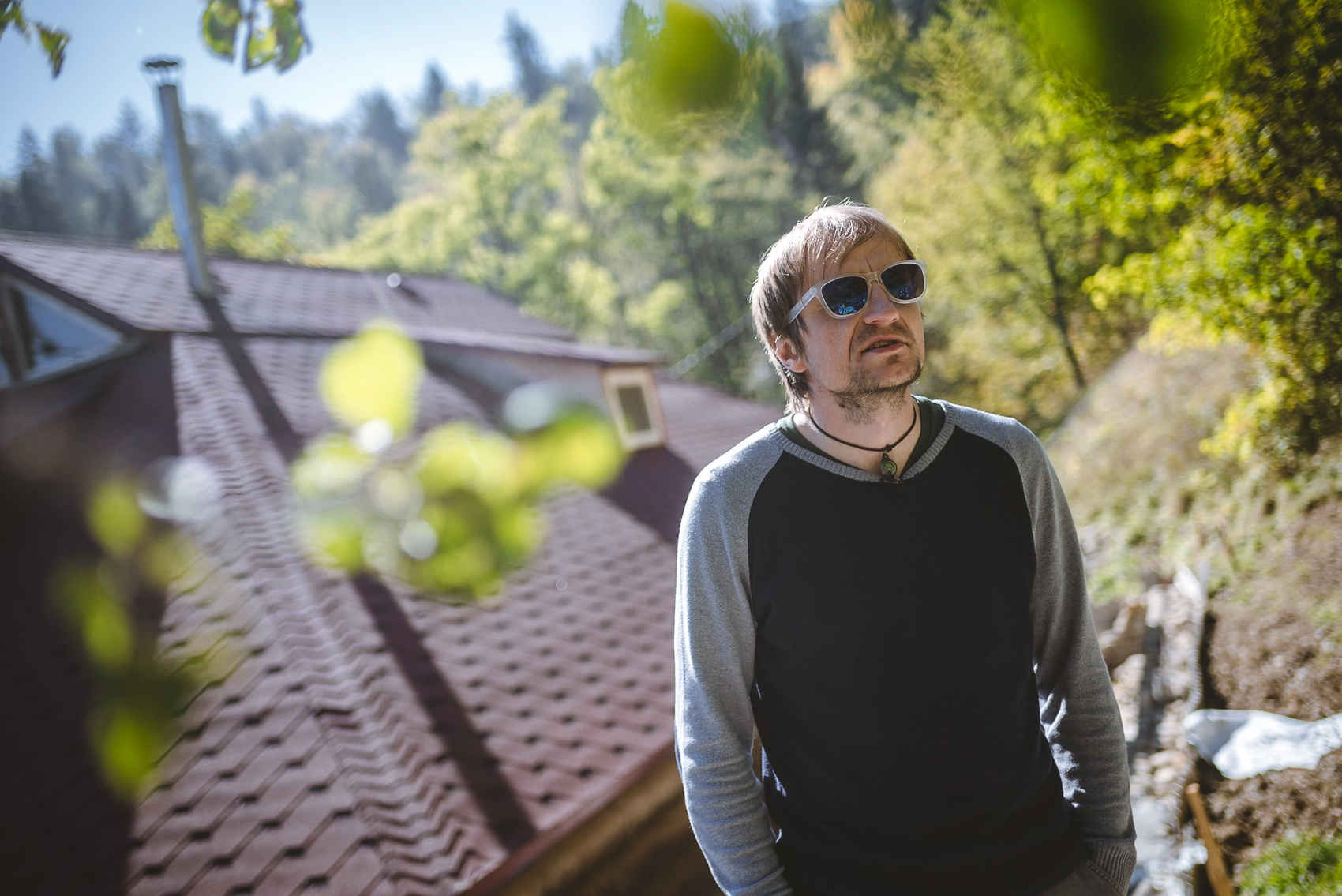
Plans
The possibilities this project opens up to this day are big and numerous, so the team often finds itself exploring new ideas and plans. The administration plans to create a map of all the local routes, but for this they first have to explore the entire region. Vilya Chupak leans on his past experience, as he says, because when people come, you have to have something to offer them.
—We have to develop interactive cars. We even want to have a zipline put up. Some kind of attractions and activities for visitors. But we have to base this at Hutsulʹshchyna, descend at Yavoriv, descend at the Pysanyi Kamin (ukr. – Painted Rock, tr.), and in the winter, at Ramykhalkiv.”
A zipline
Is a tourist attraction where a pulley is suspended on a cable, usually made of stainless steel, and mounted on a slope, over which people can be propelled with the help of their weight and gravity.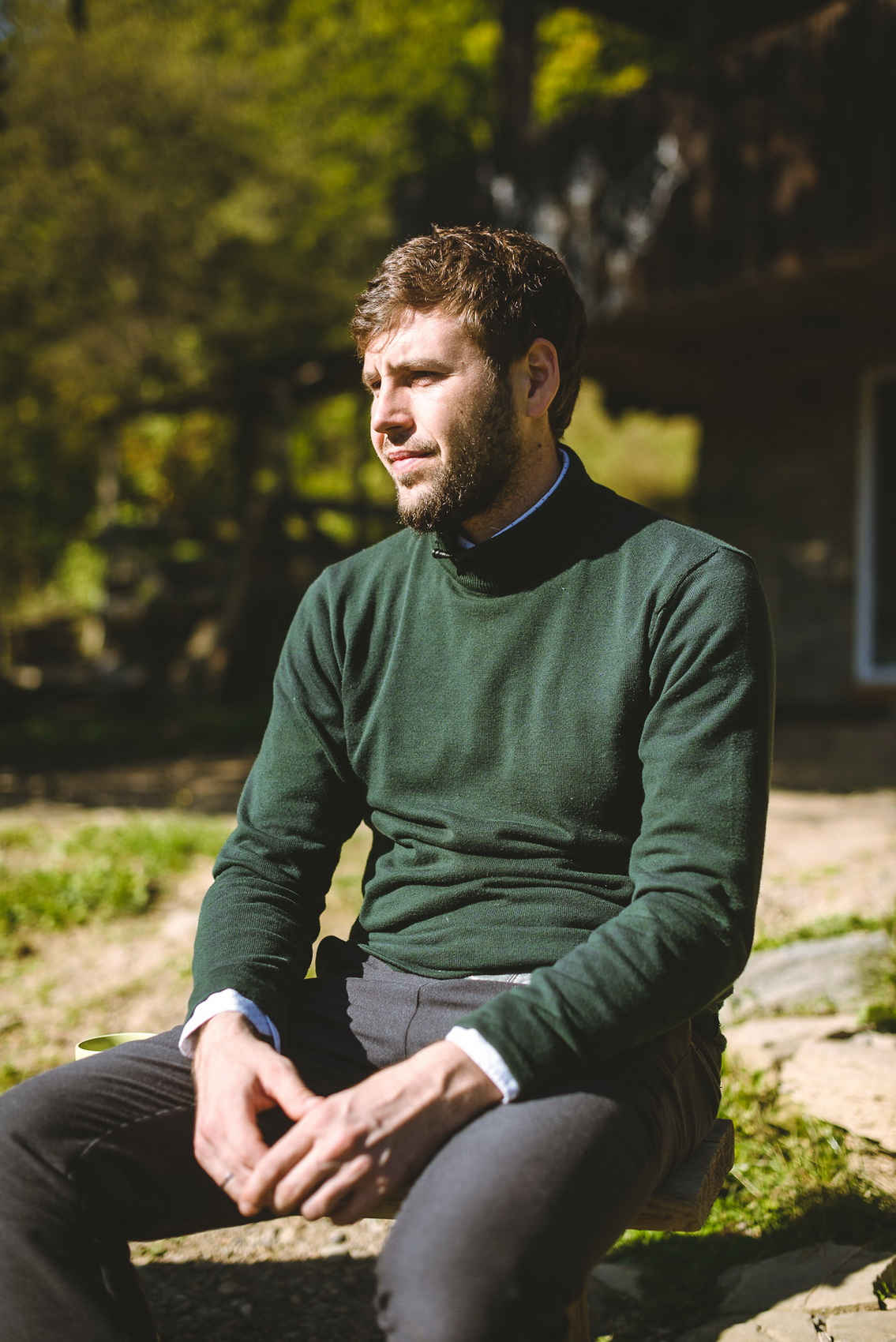
Taras Kovalchuk commented that guests gather for something real:
— Truthfully, we can do a lot for the people – bring volunteers to the city because they wanted to do something there. We’re ready to work with the people, we can make even more than what we already have.
Within the team, there has been talk of expanding the project. Alyona Karavai believes that the project’s growth is very limited.
— The team still has a lot of energy, and it seems to me that there will come a moment when we’ll be able to say “everything’s okay here” and move on. Perhaps later we’ll rescale. Our energy is here still, so we want to develop things here.
The guys want to develop the routes and paths, and they’re burning with this passion; Natalia and I want to see how we can work with the school. We’ll see what happens after that.
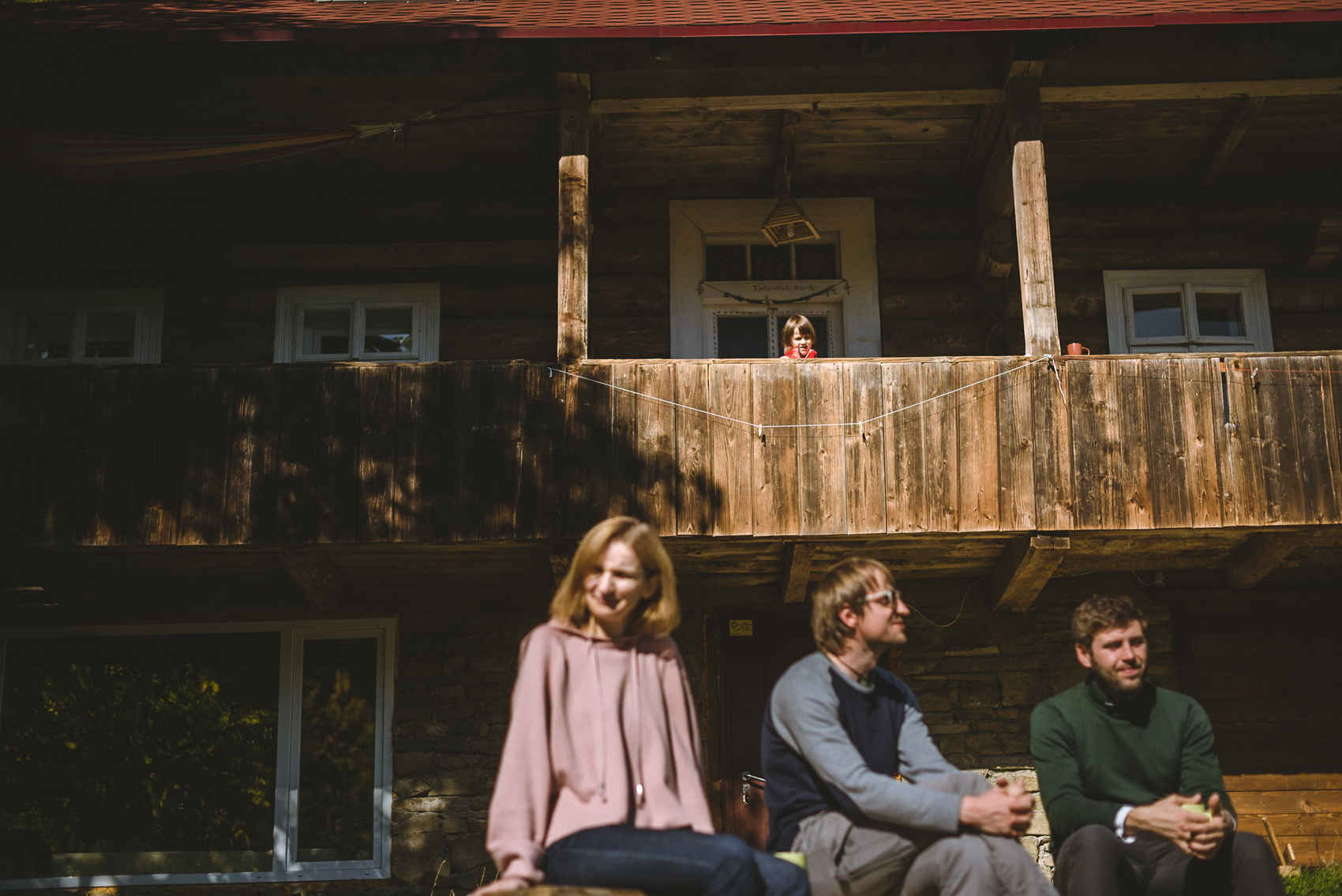
Even today, Khata-Maysternya demands a lot of energy and work from the team, but it also gives back. Alyona Karavai explains:
— This is a process, and within it there was a culmination of good things, but there were also moments where we would all be thinking ‘I can’t do this anymore. As Vilya put it, these relations – and their development – are a complicated and taxing thing. But it seems to me that we’re moving along, we’re not going in circles.
Taras Kovalchuk adds:
— At the very least, we’re definitely not disappointed. That’s for sure!

